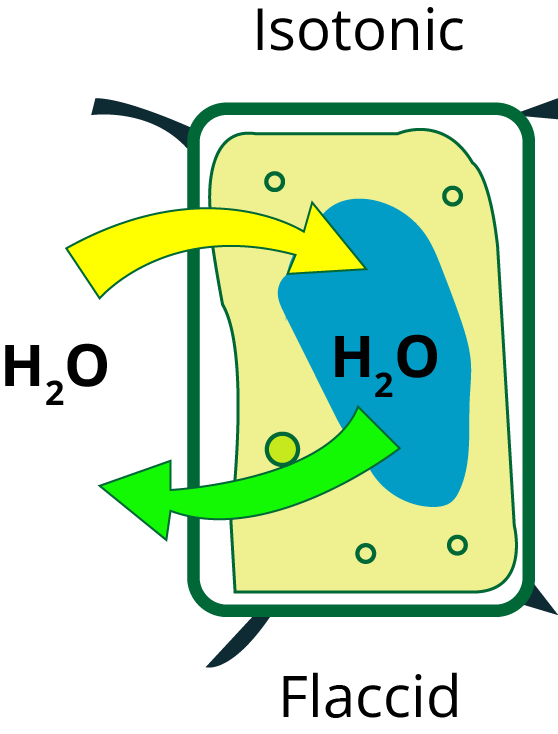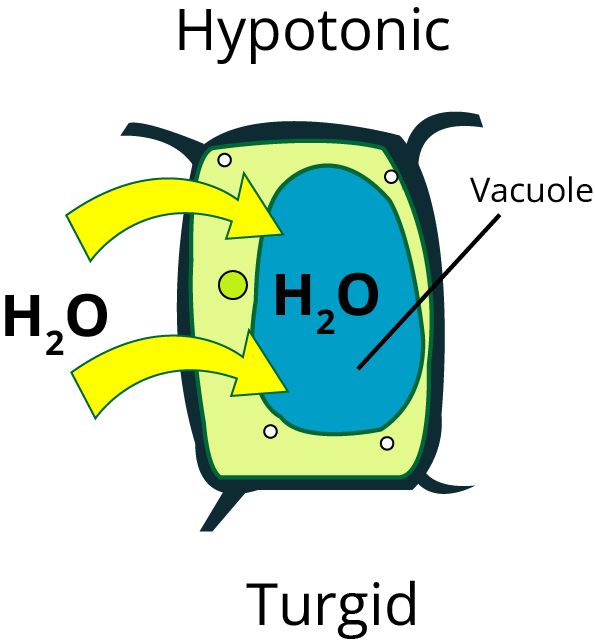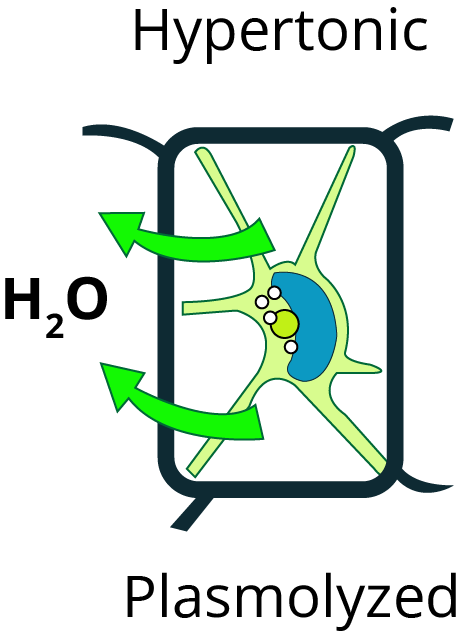




Transport in Plants
Transport in Plants chapter is highly important for NEET 2022 examination and, thus, students need to have thorough knowledge about the chapter. This synopsis of the chapter covers all the important topics and can help the students in understanding the whole chapter in minutes. Transport in Plants notes pdf can also be downloaded for offline access to the notes which is available on Vedantu's site.
Herein, all the important topics such as means of transport, plant-water relations, long-distance transport of water, transpiration, phloem transport, transportation of food in plants and other such topics have been written in a very concise manner so that it becomes easy to understand and pay more attention to the crucial topics.
Important Topics of Transport in Plants
Means of Transport
Plant Water Relations
Transpiration
Water Potential
Plasmolysis
Imbibition
Translocation
The Pressure Flow or Mass Flow Hypothesis
Important Concepts of the Chapter
Plants carry a variety of chemicals such as gases, minerals, water, hormones, and organic solutes over short distances (from one cell to another) and long distances (from roots to tips of the stem) as water.
Translocation through mass flow refers to long-distance transfer via the vascular system, xylem, and phloem.
Translocation can be unidirectional, as in the case of water, or multidirectional, as in the case of minerals and organic solutes.
Means of Transport
Simple Diffusion
Diffusion is a passive and slow method of moving along a concentration gradient through a permeable membrane.
There is no energy expense. It can be found in both liquids and gases.
Diffusion rates are affected by concentration gradients, membrane permeability, temperature, and pressure.
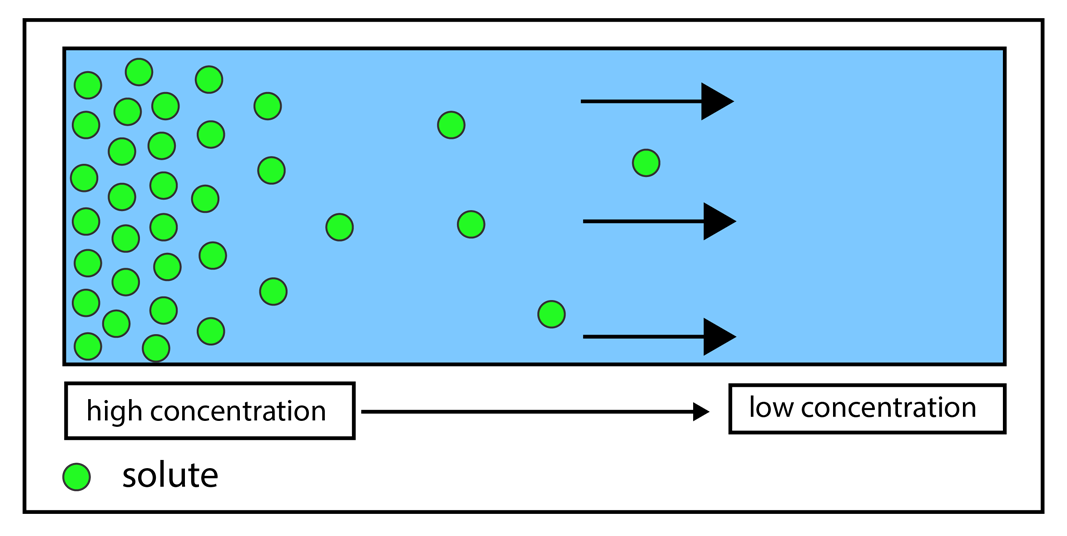
Facilitated Diffusion
Lipid soluble particles cross the cell membrane freely, whereas the passage of hydrophilic solutes is aided.
Membranes with aquaporins or water channels enhance diffusion. Aquaporins are membrane proteins that allow water-soluble compounds to be transported without the need for energy.
The protein creates channels in the membrane through which chemicals can travel. Porins are proteins that produce massive pores in the outer membranes of plastids, mitochondria, and other organisms.
Eight different types of aquaporins together make up the water channels.
Passive Symports and Antiports
Active Transport
Pumps molecules against a concentration gradient using energy. Membrane proteins are responsible for this.
Pumps are mobile carrier proteins that are used in active transport.
Pumps are capable of transporting substances from low to high concentrations where the carrier proteins carry across the membrane are quite specialised.
Comparison of Different Transport Mechanisms
Plant-Water Relationship
All physiological functions of plants, as well as all living beings, require water. It provides a medium in which most things can dissolve.
Water is found in the protoplasm of cells, where many molecules are dissolved and suspended.
Terrestrial plants absorb a lot of water and emit the majority of it as water vapour through transpiration.
In both agricultural and natural ecosystems, water is the limiting factor for plant growth and output.
Water Potential
It is a crucial notion in the study of water movement. The function of solute potential (Ψs) and pressure potential (Ψp) determine water potential (Ψw).
The same can be represented as:
Ψw = Ψp + Ψp
Kinetic energy exists in water molecules. The higher the water concentration in a system, the higher the kinetic energy or water potential. As a result, pure water has the most water potential.
Water potential is represented by the Greek letter Ψ (Psi) and is measured in Pascals (Pa).
The degree of the reduction in water potential caused by the dissolution of a solute is referred to as solute potential (Ψs). The potential of a solute is always negative. The solute potential decreases as the number of solute molecules in the solution increases.
When pure water or a solution is subjected to a pressure greater than atmospheric pressure, its water potential diminishes. In most cases, the pressure potential is positive. Psi P stands for pressure potential.
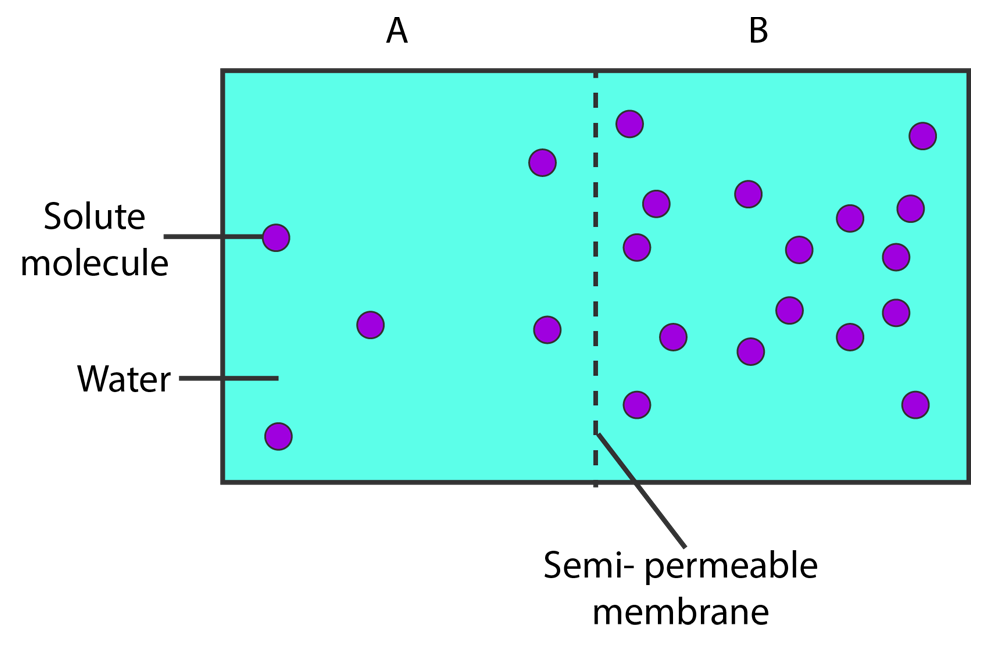
Osmosis
The diffusion of water across a semi-permeable membrane is known as osmosis. The pressure gradient and concentration gradient determine the net direction and rate of osmosis. Until equilibrium is attained, water will migrate from a location of higher concentration to a zone of lower concentration.
Osmotic Pressure
Osmotic pressure is the pressure that develops in a pure solvent due to the presence of additional free water molecules.
Osmotic potential: Capability to bring about osmosis
Osmotic potential is negative of osmotic pressure
Factors that influence osmotic pressure include
Differences in particle numbers (concentration of dissolved solute)
Higher Free energy.
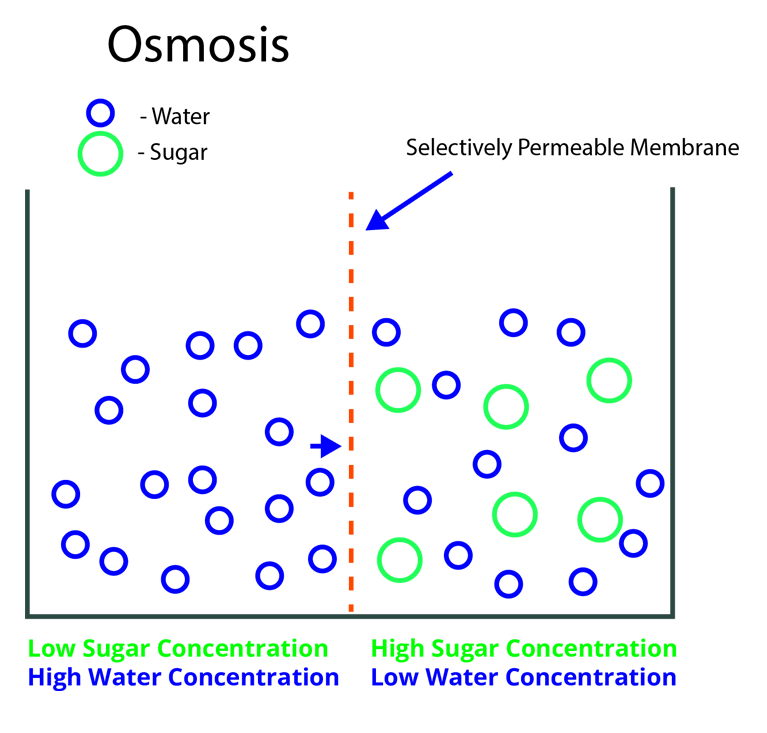
Plasmolysis
Plasmolysis can be described as the shrinkage of a cell's cytoplasm away from its cell wall caused by a hypertonic solution. When the cell is put in a hypotonic solution, the pressure of plasmolysis is usually reversible.
The table represents the various kinds of water movement depending on the surrounding solution.
Turgor Pressure
Turgor pressure is the pressure that builds upon the wall when water moves within. It is in charge of cell enlargement and extension growth.
Imbibition
Water is absorbed by solid colloids, causing them to expand in volume, which is referred to as imbibition. Seeds and dry woods, for example, can absorb water. Because water moves from a greater concentration to a lower concentration, imbibition is a type of diffusion.
Bulk Flow System
Water is transported across long distances in plants using a mass or bulk flow system. It is the bulk movement of a substance from one location to another caused by a pressure differential between two points.
Translocation
Translocation is the mass transport of chemicals via the conducting or vascular tissue of plants. Water and mineral salts, as well as some organic nitrogen and hormones, are transported from the roots to the aerial regions of plants via xylem.
Absorption of Water by Plants
Diffusion allows water and mineral solutes to be collected by root hairs. Two channels, namely, the apoplast and symplast pathway carry the absorbed water to the deeper layer.
Difference Between Two Channels of Water Absorption by Plants
Since the cortical cells are loosely packed and pose no resistance to water movement, the majority of water in roots flows down the apoplast channel.
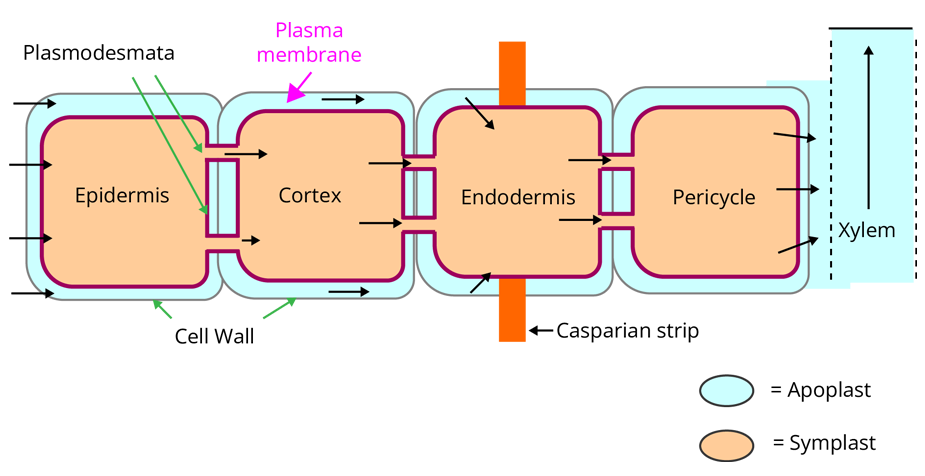
Mycorrhiza - The symbiotic relationship between a fungus and angiospermic roots is known as mycorrhiza. The fungal filaments build a network around the newborn root, providing a vast surface area for mineral ions and water to be absorbed from the soil. Minerals and water are provided by the fungus, and organic and nitrogen-containing chemicals are provided by the roots.
Translocation of Water
Ascent of sap or translocation is the upward transport of water from the roots to the tips of stems, branches, and leaves. The theories involved in the translocation of water are:
Vital force theory
Root pressure theory
Theory of Capillarity
Cohesion Tension theory
Transpiration
Transpiration can be described as the loss of water from plants' aerial portions in the form of water vapour. Transpiration serves the following functions:
In plants, it creates a transpirational pull for absorption and transport.
Provides water for the process of photosynthesis
Minerals and salts are transported from the soil to other sections of the plant.
Maintain the form and size of the leaves by cooling them.
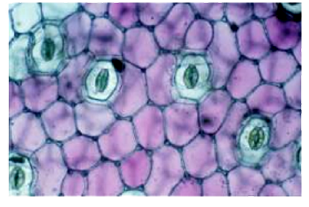
Phloem Transport: Flow from Source to Sink
Phloem transports food (sucrose) from the source to the sink. The part of the plant that synthesises food is known as the source, whereas the section where food is utilised or stored is known as the sink.
Depending on the season or the needs of the plants, the source and sink can be reversed. As a result, the phloem's movement is bi-directional.
Water and sucrose make up the majority of phloem sap, although it also transports other sugars, hormones, and amino acids.
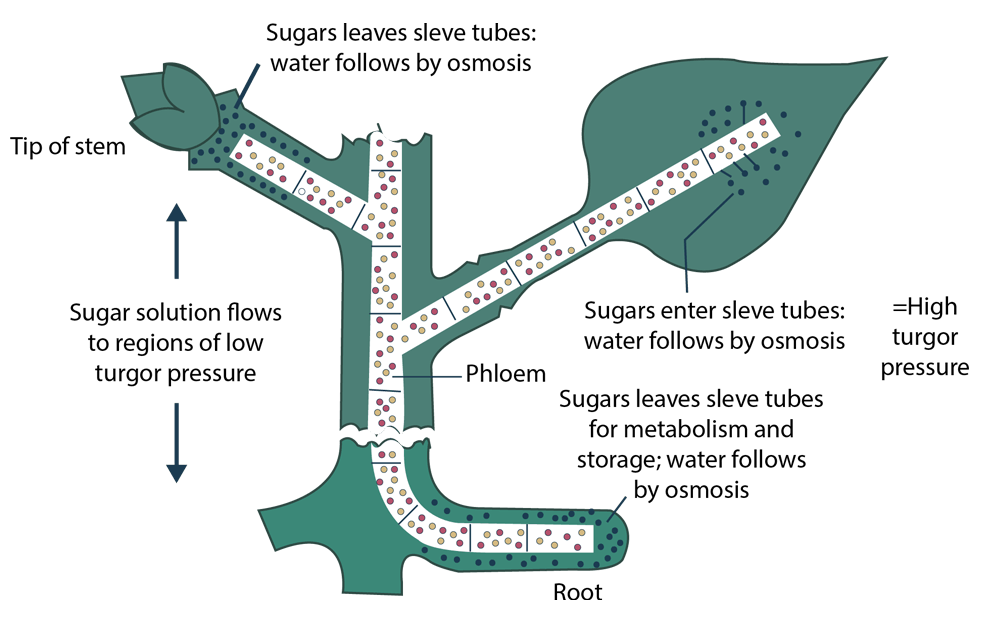
Pressure or Mass Flow Hypothesis
Stated by Munch.
The movement of organic substances happens from the high osmotic pressure region to the low osmotic pressure region.
During the process of photosynthesis, glucose is converted to sucrose.
There occurs a very active transport of sucrose to companion cells to phloem sieve tube cells.
The transport of water from the adjacent xylem moves into the phloem by osmosis
This causes the building up of the osmotic pressure.
Additionally, the hydrostatic pressure of the phloem within the sieve tube increases, pressure flow initiates, and the sap moves via the phloem
Sugars are actively transported out of the phloem and eliminated as complex carbs at the sink.
The loss of solute causes a high water potential in the phloem, and water escapes, eventually returning to the xylem.
The girdling experiment is done to determine the tissues that carry food.
Solved Examples From the Chapter
1. Osmotic pressure in the leaf cells is positive during
Excessive transpiration
Low transpiration
Excessive absorption
Guttation
Ans: a. excessive transpiration
During high transpiration, the osmotic pressure in the leaf cells is positive. The osmotic pressure of the leaf cells increases as water is removed from the leaf surface through transpiration.
Key point to remember- The osmotic pressure is the lowest pressure that should be given to a solution in order to stop the passage of its pure solvent across a semipermeable barrier (osmosis). It is a colligative feature that is solely determined by the concentration of solute particles in the solution.
2. Amphistomatic leaf, with stomata distributed equally on both the surfaces, is an example of
Isobilateral leaf
Dorsiventral leaf
Xerophytic leaf
Hydrophytic leaf
Ans: a. Isobilateral Leaf
An isobilateral leaf is the one in which the stomata are evenly distributed on both surfaces. The appearance of these leaves is observed to be the same on both sides.
Key point to remember: The word iso in isobilateral stands for same and bi means both sides.
3. A 10% solution of which of the following substances shall have maximum OP?
NaCl
Sucrose
Glucose
Fructose
Ans: a. NaCl
NaCl is an electrolyte, whereas glucose, sucrose, and fructose are non-electrolytes, and osmotic potential is observed or produced in electrolyte solutions, not non-electrolyte solutions.
Key point to remember: The inclusion of solute particles raises the osmotic pressure value.
Solved Problems of Previous Year Question from the Chapter
1. The process responsible for facilitating loss of water in liquid form from the tip of grass blades at night and in early morning is:
Imbibition
Plasmolysis
Transpiration
Root Pressure
Ans: d. Root Pressure
Water can be pushed up to tiny heights in the stem by root pressure (positive pressure)." Excess water gathers in the form of droplets across special openings of veins near the tip of grass blades and leaves of many herbaceous parts at night and early morning when evaporation is low and excess water collects in the form of droplets around special openings of veins near the tip of grass blades and leaves of many herbaceous parts.
Guttation is the term for the loss of water in its liquid state. Imbibition is the adsorption of water by hydrophilic compounds that leads to absorption. When a cell undergoes exosmosis, plasmolysis occurs, which causes the cell membrane and cytoplasm to shrink. Transpiration is the loss of water from the plant's aerial portions in the form of water vapour.
Key point to remember: Loss of water in liquid form is termed as guttation.
2. What is the direction of movement of sugars in phloem?
Upward
Downward
Bi-directional
Non-multidirectional
Ans: c. Bi-directional
Sugar flow in phloem is bidirectional because it is dependent on the source-sink connection, which varies in plants.
Key point to remember: The source and sink relationship are variable and depends on the season and plant’s needs.
3. Xylem translocates:
Water and mineral salts only
Water, mineral salts and some organic nitrogen only
Water, mineral salts, some organic nitrogen and hormones
Water only
Ans: c. Water, mineral salts, some organic nitrogen and hormones
Xylem performs translocation of water, mineral salts, some organic nitrogen as well as hormones.
Key point to remember: Xylem is characterized as the complex tissue comprising tracheids, vessels, xylem fibres and xylem parenchyma.
Practice Questions
1. A slice of sugarbeet placed in a concentrated salt solution would
Become swollen
Lose water and become flaccid
Absorb small quantity
Show no change
2. Root pressure is high when:
Transpiration is very low and absorption is also low
Transpiration is very high and absorption is very high
Transpiration is low and absorption is high
Transpiration is high and absorption is very low
3. Conversion of starch to organic acid is essential for
Stomatal closure
Stomatal opening
Stomatal initiation
Stomatal growth
1. Ans: b. lose water and become flaccid
Since the concentrated salt solution is hypertonic, a slice of sugarbeet would lose water and become flaccid if placed in it.
Exosmosis causes protoplasm to shrink and leave the cell wall when a cell is placed in a hypertonic solution, causing the cell to become flaccid.
2. Ans: c. Transpiration is low and absorption is high
The pressure applied by the root for the upward passage of the sap is known as root pressure. When the evaporation of water from the plant's leaves is minimal and the absorption is significant, the rate of root pressure rises.
3. Ans: b. stomatal opening
According to Lloyd, the interconversion of starch and organic acids regulates stomatal motility. When starch is converted to organic acid in the presence of enzymes and light, guard cells become turgid, which leads to the stomata opening.
Conclusion
The synopsis of any chapter can help the student in making learning easy and this article carries the same for the chapter Transport in Plants. At the bottom of the chapter, transport in plants neet questions, sample questions, previous year questions and practice questions have been added that one can refer to for a better understanding of the NEET 2022 exam pattern.
NEET Biology Important Chapter - Transport in Plants

 Share
ShareFAQs on NEET Biology Important Chapter - Transport in Plants
1. How many questions can be asked from the chapter transport in plants in NEET?
The Plant Physiology unit carries a weightage of 6% in the NEET examination, out of which 1-2 questions are asked from the chapter transport in plants.
2. What are some tips for preparing for the NEET 2022 exam?
Below stated are some of the important tips for NEET exam preparation:
During this time, avoid reading from numerous sources. All of the aforementioned subjects should be thoroughly explored.
As much as possible, practise questions; understanding the question is the first step toward solving it.
Human physiology, plant physiology, reproduction, genetics, and ecology, for example, need all be substantially reviewed.
Practice taking mock tests to increase your speed when answering questions.
3. What are some Innovative methods to study for the NEET Exam?
Innovative methods to study for the NEET Exam are as follows:
Fill in the gaps in your knowledge with online resources.
More diagrams should be practised and pasted throughout the study area to preserve a regular review schedule and to add colour to the environment.
Candidates can listen to soothing music in the background while studying if that is more convenient for them.
Maintain a healthy level of physical activity while preparing.
It's best not to read too many news stories.




















 Watch Video
Watch Video



